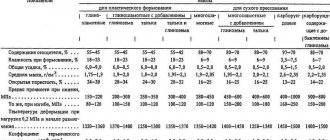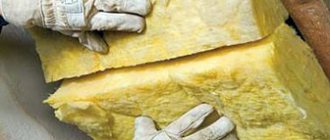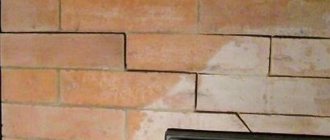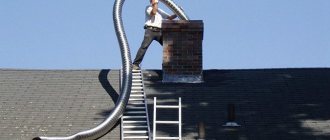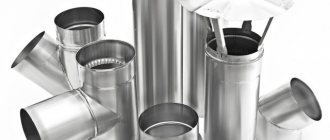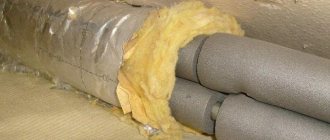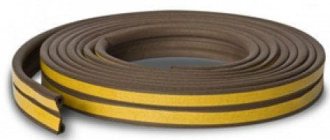Thermal insulation of a furnace is actually a much more important process than it might seem at first glance. Unfortunately, many owners of private houses neglect stove insulation, considering it an unnecessary measure. In this article we will look at the reasons why stoves are insulated and methods of insulation.
Thermal insulation of the stove allows you to protect the walls of the building from the heat of the stove.
Why is thermal insulation needed?
The role of the thermal insulation material is that, due to its poor thermal conductivity, the transfer of energy through the layer of material is difficult. Thus, you can not only preserve the heat that the fireplace produces, but also protect the structural elements of the house from high temperatures.
Chimney insulation serves several purposes.
- At the external location of the pipe, intense heat exchange occurs with the cold air of the street space. A huge part of the amount of heat is released into the atmosphere, but could be used to heat the room. If you reduce this share, you will achieve higher efficiency indicators. The solution to this issue will be insulation, which is applied on top of the walls of the chimney.
- Combustion products that are emitted through the chimney contain carbon dioxide and water vapor. The temperature of all this gas exceeds a hundred degrees. Upon contact with the chimney walls, which have cooled from the external environment, condensation forms on the surface of the latter. Acids, which are a combustion product, are mixed into it. The result is a chemically active environment, leading to the destruction of the walls. The appearance of condensation can only be avoided by increasing the temperature of the pipe itself, that is, by providing it with high-quality insulation.
- In places where the chimney pipe passes through the ceiling or roof, contact of materials necessarily occurs. In the case of wooden buildings, this situation is a fire hazard. But an additional function of insulation will be to protect the ceiling surfaces.
Corner placement option
Internal insulation of fireplaces implies the localization of energy inside the firebox for the purpose of its directed transmission. The fireplace should not emit heat in all directions, especially if it is installed near a wall. It should warm those sitting directly in front of the fireplace. Special reflectors for fireplaces are installed inside the firebox and serve as a screen from infrared radiation. As a result, all the heat escapes through the combustion hole into the room.
Reliable thermal insulation for stoves and fireplaces means protecting the walls of the building from the negative effects of temperature. When the fireplace is located close to the wall, a heat-protective layer is installed, since high temperatures can lead to destruction of the brickwork of the wall or fire if the building is wooden.
Why do you need non-combustible insulation and what to pay attention to
Fire-resistant thermal insulation is necessary for every home because it is not only able to insulate the building from the effects of low temperatures, but also provides safety to the user. This reduces the chance of an accidental fire to 0%. If previously such insulation materials were new, in 2021 there are hundreds of models on the market that are suitable for household stoves, fireplaces, chimneys, baths, while their efficiency remains at a high level.
Oxygen index
The first selection criterion is the oxygen index. The characteristic indicates the minimum amount of oxygen that is present per unit volume of thermal insulation. In total, there are three types of insulation, which differ in flammability threshold:
- 40%. This category includes composite polymers;
- 31%. Glass wool, basalt wool and other fibrous and cellular thermal insulation;
- 20%. It is worth knowing that such products burn well in air, so their use is unacceptable in fire hazardous areas.
Peculiarities
When choosing a fire-resistant heat-insulating substance, it must have the following parameters:
- Burning with a visible flame is permitted, but must not last longer than 10 seconds. This will prevent the fire from spreading to other areas, which will prevent a large fire from starting.
- When burning, the maximum temperature of the material used should not rise above 50 degrees.
- In addition, it is important that the thermal insulation does not lose half of its volume and mass during combustion.
If all these points are met, then the user can be confident in the selected material, because it will never let him down.
Requirements for thermal insulation materials
At its core, a fireplace is the same stove with an open firebox and chimney, equipped with decorations. These products do not have any other design features, therefore the approach to their installation and equipment is the same. Thermal insulation, accordingly, is carried out separately for the firebox and for the chimney and must meet the following requirements:
- Low thermal conductivity
- Environmental friendliness
- High fire resistance
- Durability
- Maximum permissible heating temperature
The materials must retain the listed properties in full throughout their entire service life.
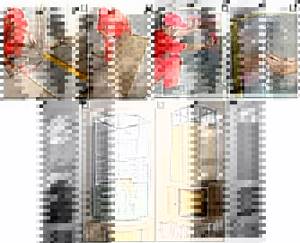
Classification by composition
High temperature insulating materials are divided into the following types:
- Packed and filled: zirconium oxide, quartz sand, various mortars, kaolin. Used mainly in industry, labor-intensive to manufacture
- Fiber insulators: fire-resistant wool, felt, felt, are essentially mineral wool and its derivatives. They have the lowest thermal conductivity coefficient, are resistant to thermal shock, but can be susceptible to mechanical damage
- Solid materials: fire-resistant cardboard, fireclay bricks, fire-resistant ceramic slabs. Retains original shape and can bear mechanical loads
Overview of the thermal insulation materials market
The following will provide comparative characteristics of the materials available for free sale.
Rockwool Firebats
Due to its attractive price and high availability, it is the most popular product in the field of application in question. Composition: 100% stone (gabbro-basalt) wool. Available in two types: uncoated and with aluminum foil on one side. The maximum permissible temperature on the foil side is +500°C, on the cotton side +750°C. Slab size 1000*600*30 mm, density 100 kg/m3.
The thermal conductivity coefficient at +300°C is 0.088 W/m*K. The option without foil is not flammable, with foil the flammability class is G1. When choosing this material, it is very important to calculate the peak temperature of the firebox, since overheating may cause the foil to peel off and an unpleasant odor to spread throughout the room along with microparticles of cotton wool fibers. Insulator slabs are highly flexible and therefore are mounted in a rigid metal frame.
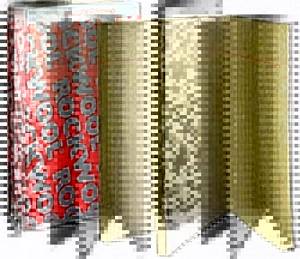
Vermiculite
A natural mineral from the hydromica group, the layered structure of which forms multi-colored threads when heated. Fire retardant materials are produced from it by pressing. In addition to fireboxes, it is used in the aviation and automotive industries, as well as in nuclear energy as a reflector and absorber of gamma radiation. The material is presented in two products on the market:
- VermixFireproof. Country of origin - Russia, thermal conductivity coefficient at +300°C - 0.18 W/m*K, plate size 600*600*30 mm, density 300 kg/m3, permissible temperature +800°C. Among the advantages are ease of processing and installation; a rigid frame is not required. There are also disadvantages - the material is afraid of moisture.
- Skamolex is a vermiculite thermal insulator imported from Denmark. It is a symbiosis of refractory and decorative panels with various design solutions. Thermal conductivity at +200°C is 0.16 W/m*K, plate size 1000*610*25 mm, density 600 kg/m3, peak temperature +1100°C. Advantages: does not require subsequent finishing treatment - according to the “set it and forget it” principle, used for lining fireboxes. The downside is the high cost; depending on the region of the Russian Federation, the price of a slab can be 5 times higher than a slab of the same area Vermix Ogneupor.
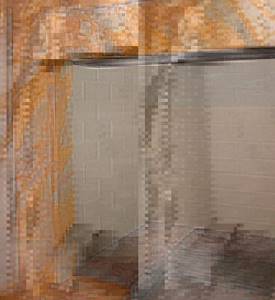
Based on calcium silicate
The next series of thermal insulators is calcium silicate - an inorganic substance in the form of a calcium salt and metasilicon acid. The mineral is presented on the market in the following versions:
- Silca 250km. Imported from Germany. Slabs measuring 1000*625*40 are designed for use in stoves, fireplaces and brick chimneys. Density 250 kg/m3, thermal conductivity coefficient 0.09 W/m*K at +200°C, application temperature +1100°C. The structure of the board is not fibrous, it can act as both an insulator and a facing material, and is absolutely harmless to human health. The installation features do not include a metal frame. Suitable for thermal insulation of wooden walls in places where the firebox is installed.
- Promasil 950 ks is another product from Germany with a size of 1000*500*30 mm and a density of 245 kg/m3. Peak load is 900°C, thermal conductivity at +200°C is 0.10 W/m*K, which is insignificantly inferior to the previous insulator at half the cost. It is easy to install without a frame, the manufacturer guarantees environmental safety. The material is relatively new, there are very few practical reviews on its use, and construction specialists are confused by the low price compared to analogues.
- Scamotec 225 - sample from Denmark. Slab size 1000*610*30 mm, thermal conductivity coefficient 0.08 at +200°C, maximum application temperature +1000°C, easy to install without a frame, harmless to health, combines thermal insulation and decorative qualities, it can be coated with any fire-resistant paint. The cost is in the middle price segment.
- Isolrath 1000. Country of origin: Austria. Size 1000*610*30 mm, density 240 kg/m3, thermal conductivity 0.06 W/m*K at +200°C. Operating temperature up to +900°C, a frame for installation is also not needed. The manufacturer guarantees environmental and fire safety against the backdrop of high structural strength. It also belongs to the middle price segment.
Methods for insulating furnace ducts
The choice of materials and technology for performing chimney thermal insulation work with your own hands depends on several factors. Let's look at the main ones in more detail, indicating the positive and negative qualities of thermal insulators.
Basalt wool insulation
One of the most common thermal insulation materials - this is due to its advantages:
- low level of thermal conductivity. According to this characteristic, the material is equivalent to polystyrene, rubber and cork;
- high level of water insulation of basalt fiber. Water easily wets the outer layer of the material, but cannot get inside. It is possible to work in indoor conditions with constant air humidity, while maintaining the basic characteristics;
- high fire resistance ratings. Cotton wool can withstand heating above 10,000, without loss of quality of the thermal insulation layer;
- inside the material, the fibers are arranged longitudinally and vertically, this feature allows it to withstand high compressive loads. The maximum permissible deformation of the layer is 10%.
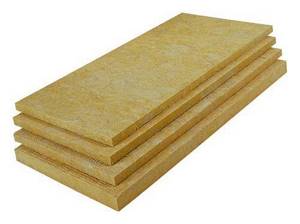
Among manufacturers, according to customer reviews, several companies are leading:
- "Rockwool" - thermal insulation from Danish manufacturers. It is ahead of competitors in a number of characteristics, which makes it possible to ensure high-quality performance of the layer with minimal dimensions in thickness. It is recommended to use for insulation of ceramic chimneys and fireplaces;
- "URSA" - this Italian brand has been working in Russia for a long time. Products are produced for the entire range of work in industry and private housing construction;
- “Izovat” - slabs from this company are produced with different levels of strength. They are produced in thicknesses of 30-200 mm and can be installed on a small chimney for a sauna stove or for industrial boiler installations;
- “Paroc” - Swedish stoves have been produced since the middle of the last century. Production has been established throughout the European continent. The characteristics of the material make it possible to use cotton wool to protect steel pipelines. The “Paroc Pro Section” and “Paroc Pro Bend” product series with an outer layer have high thermal insulation and protection of steel pipelines and surfaces.
Applications of kaolin
Such materials are produced using advanced scientific developments. Inorganic binding additives are added to the mullite-silica base in a vacuum and subsequent drying of the material. To increase strength, a clay binder is added to them.
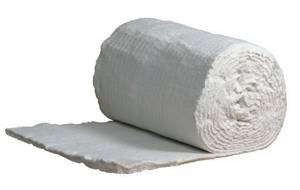
Kaolin fibers have a number of advantages:
- safe for human health. Do not contain asbestos and do not emit harmful substances when heated;
- high level of safety from fires;
- thermal energy losses are reduced;
- the material is guaranteed not to be destroyed even during the 2001 start or stop of the furnace. Can be used in a country house with occasional use of the stove;
- the slabs are easy to process and install;
- low density with high thermal insulation values affects the dimensions of the slabs and makes it possible to reduce the thickness while maintaining performance characteristics.
Insulation with mineral wool
This thermal insulation has a number of advantages:
- properties allow you to maintain optimal flow temperature at different times of the year. The temperature of the heated gases leaving the furnace and inside the room itself can vary significantly. This property is achieved by the composition and characteristics of the material. Can be used for thermal insulation of walls and pipelines.
- the substance is absolutely non-flammable. Able to not ignite even at temperatures of 10,000 and above. This layer does not allow a fire to develop and protects it from open fire. Some binders begin to evaporate at lower temperatures;
- at high heating temperatures, the thermal insulation layer retains its shape and is able to withstand small mechanical forces. This feature is achieved by introducing certain additives;
- high sound insulation rates. This material prevents the passage of sounds through the surfaces of protected walls. Air gaps form between the fibers, preventing sound from passing through;
- the top layer of cotton wool may get wet, but the water does not pass to the pipeline and does not freeze at low temperatures. This feature does not allow the development of colonies of fungi and mold;
- Environmentally friendly materials are used for production. There is no harmful effect on the atmosphere or human health.
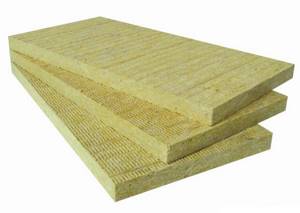
The disadvantages of this material include several characteristics:
- the material is not the cheapest. If you are offered expensive material at a bargain price, it means that they are trying to sell you a defect or a fake made from low-quality materials and produced in artisanal conditions;
- large amounts of dust emitted during work. It is recommended to work in protective suits and respiratory protection.
Among the manufacturers there are products from several companies:
- “ROCKWOOL” - stone wool from this company is in demand among domestic and foreign consumers. Among its advantages, several characteristics stand out: a high level of strength and a long service life (at least 15 years). To this we add the application of an additional protective waterproofing layer and increased sound insulation characteristics of housing;
- mineral material from . Basalt rocks are used to make it. It has an increased level of heat and sound insulation of residential premises. Light weight and ease of cutting allows you to reduce work time and perform such chimney protection yourself;
- The well-known insulation material is probably known to every consumer. The material is rolled into rolls - this makes it easier to transport and reduces the amount of waste during installation. The material does not contain formaldehyde. Recommended for use in residential, children's and school premises and hospitals.
What material is used
All building materials that provide insulation and are suitable for use in a fireplace can be divided into separate groups. These include stone fibers and silica, superisol, mineralite, gypsum fiber, supersil and vermiculite.
- Stone fibers are obtained by pressing crumbs of gabbrodolerite and limestone. The resulting fibrous structure is formed into plates. One side of the plate is covered with foil, which is capable of reflecting radiation, because this type of heat propagation accounts for about half of the total energy. Such foil can withstand temperatures of several thousand degrees. This material is quite durable and moisture resistant. Able to provide all possible assistance in maintaining the integrity of the structure in the event of a fire. The most popular fiber brands: PAROC FPS 17, TECHNO T80, Rockwool.
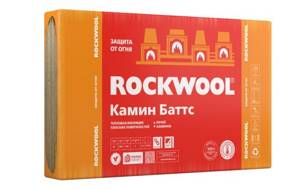
Rockwool brand insulation
- The technology for using silica involves melting alumina and quartz sand. The resulting glassy mass is blown into fiber form. Fiber is already a heat-insulating material, but for ease of use it is produced in the form of slabs or rolls. This substance is flexible, which makes it easy to insulate surfaces that are not perfectly flat.
- Products based on calcium silicate have good thermal insulation properties. Superizol is one of the representatives of this class. Its porous structure not only improves technical performance, but also facilitates easy processing. Super-insulated slabs are used to insulate fireplace casings and chimneys. They are mounted with glue or self-tapping screws. The operating temperature of the material should not exceed 1200 °C degrees.
- Vermiculite slabs represent a pressed grain structure of the substance. This is a fairly rigid structure, thanks to which the surface of the slab is ready for decoration. They have a relatively high density, but are easy to saw and process. Characterized by their durability. Buyers are showing increased interest in the Thermax, GRENAR-ISOL and Scamol brands.

Panels made of fire-resistant material Superizol
Thermal insulation not only improves the efficiency of the fireplace, but also provides fire protection. It is important that the material remains safe for humans when heated. The requirements for building insulating materials are technical performance, environmental friendliness and ease of processing.
- Supersil is a flexible material. It comes in the form of a silica fabric with a foil-like layer. But such production is expensive in terms of cost, which affects the final price of fabric rolls.
- Gypsum fiber sheets are produced by mixing cellulose with gypsum and then pressing them. A distinctive feature of such sheets is that they can be used as a building material. Gypsum fiber does not tolerate deformation, therefore it is used only for insulating the fireplace body, walls and floor.
Rating of the best fire-resistant insulation materials
TechnoNIKOL Technoacoustic
A good model that is suitable for insulating ceilings and floors.
The main element in the composition is basalt. Sold in slabs of 12 pieces per pack. You can find smaller or larger quantities. The product belongs to the NG category, which means that it is not subject to fire and will begin to melt at high temperatures. The service life of this material is 50 years. In addition to excellent temperature resistance, the material does not transmit sound. Also, metallurgical slags are often included in the composition of wool, which increases its effectiveness. TechnoNIKOL Technoacoustic
Advantages:
- Resistance to high temperatures;
- Wide range of applications;
- Price;
- Workmanship;
- Convenient form factor.
Flaws:
P-600-450-150-1
Foam glass is an excellent option for equipping industrial buildings with thermal insulation. In appearance, the material resembles frozen bubbles with a porous surface. Production is carried out using the method of sintering glass elements with coal. The product is highly resistant to various temperatures, which makes it possible to use it in many fire-hazardous places.
The average cost is 20,000 rubles per cubic meter.
foam glass thermal insulation P-600-450-150-1
Advantages:
- Shows high resistance to temperatures;
- When melting, it does not emit toxic substances;
- Safety;
- Durability (100 years);
- Easy installation;
- Simple processing.
Flaws:
- Large mass, so it is recommended to place the insulation in basements;
- High price.
Expanded vermiculite
The material is perfect for carrying out various construction and repair work on insulating a house with a fire-resistant substance. It is obtained by firing natural hydromicas. It is a granular substance that shows high resistance to harmful microorganisms and temperatures. Most often it is used in the construction of small low-rise buildings, because there it shows the greatest efficiency.
Acceptable operating temperatures at which expanded vermiculite does not lose its properties vary from -256 to +1100 degrees Celsius. In addition to excellent fire-resistant properties, the product has a positive effect on the soundproofing characteristics of walls.
The average cost is 1,000 rubles per bag.
Expanded vermiculite
Advantages:
- High efficiency;
- Wide scope of application;
- Natural composition, which affects the safety of the human body;
- Price;
- Withstands mechanical stress.
Flaws:
Perlite M-75
This is an excellent choice for those who are going to insulate their home for a long time. The main element of the composition is obsidian hydroxide granules. The main advantage of this option is low weight, as well as high thermal insulation. Suitable for insulating outbuildings and roofs with any slope, which is a big advantage. This product is also used to fill voids in wall masonry. It is highly resistant to record temperatures, and when melted it does not emit any pungent odors that can harm humans or nature.
Perlite M-75
Advantages:
- Safety;
- Fluidity, this allows the material to completely fill the voids;
- Inorganic;
- Withstands temperatures over 1000 degrees;
- Soundproofing;
- Cost-effective;
- High performance indicator.
Flaws:
- Weak resistance to mechanical stress;
- Absorbs moisture.
SILCA 250KM
These are lightweight calcium silicate boards that are highly resistant to high temperatures and have excellent performance properties. They can be used in domestic ovens where a reducing atmosphere is present. Such slabs are more often used for the back layer of lining.
SILCA 250KM
Advantages:
- Withstands temperatures up to 1100 degrees;
- Provides excellent protection for ovens;
- Safe materials are used in production;
- Hard surface;
- Reliability.
Flaws:
Carrying out work
The technology for thermal insulation of a fireplace consists of a step-by-step solution to certain problems.

Setting tasks and solving them
- The required amount of material is calculated. For more efficient use, take into account the cutting and processing ability of the insulation boards or fabric.
- If the fireplace is located at a distance not exceeding 50 cm from the wall, then sheets of insulating fiber are attached to its walls.
- The degree of insulation can be increased using a multilayer structure.
- The chimney is insulated, regardless of what material it is made of.
The characteristics of modern insulating materials will help answer the question, how to properly insulate a fireplace? To insulate walls, it is advisable to use slabs, one side of which is covered with foil. The foil creates a protective screen, and the effectiveness of such protection is quite high. A negative quality is the unaesthetic appearance of slabs made of insulating material.
In wooden buildings, it is recommended to use several layers of insulation. To do this, a lathing is made of metal slats into which gypsum fiber boards are inserted. A wooden sheathing is mounted on top to secure sheets of fire-resistant plasterboard. The outside surface must be finished with tiles or artificial stone.
Several technologies are used to perform chimney thermal insulation. One of them is making a sandwich pipe. A box is made of metal, which has a larger diameter compared to the diameter of the chimney pipe. Mineral wool is laid along the walls of the box. Then a pipe of smaller diameter is inserted inside. When manufacturing the structure, it is necessary to provide for the option of wrapping the pipe in parts.
The brick pipe is insulated with plaster, which is applied in several layers on all sides. After the fourth layer, the outside of the pipe is lined with mineral wool slabs. They are fastened with self-tapping screws with large washers. The outside must be made of brick; it will give an aesthetic appearance to the pipe and protect the material from precipitation.
Recommendations from experts on choosing insulation
There is a large selection of thermal insulating materials. The quality of insulation depends on its thermal conductivity and thickness. The thicker the insulation and the lower its thermal conductivity, the better it will insulate from unwanted heating or cooling. When choosing insulation, you need to pay attention to fire resistance, heat resistance, and the absence of toxic emissions when heated.
Kaolin wool has no competitors in terms of fire resistance. Even open fire doesn't kill her. The only drawback is the high price.
Basalt, mineral, glass wool are excellent thermal insulation materials. They are not flammable. Previously produced brands were not completely safe for humans. The complaints were caused by both the binder - phenol-formaldehyde resins, and crumbling solid fibers, the smallest particles of which could get into the respiratory tract. It is believed that modern production methods have completely solved the safety problems.
Advice! When laying insulation in several layers, it is necessary to lay the heat insulator overlapping, avoiding overlapping joints.
*
The safest materials: thermal insulation and folgoizol based on polyethylene foam. They have low thermal conductivity and are easy to use. Folgoizol reflects thermal radiation better, so it costs a little more. The ease of installation is due to the shape of the product. It is enough to simply put them on the insulated product and secure it firmly with aluminum tape. The disadvantage of the material is low heat resistance. Suitable for use at temperatures up to 170 °C. There is also no resistance to open fire.
How to do it yourself?
- First, the required number of thermal insulation boards is taken, which are cut to the size of the fireplace insert.
- After this, a special heat-resistant glue (mineral, cement-based) is applied, and the application should be carried out pointwise.
- When installing foil material, glue is applied to the non-foil part.
- After this, the slabs are mounted on the walls. Joints and other openings must be sealed with special heat-resistant aluminum tape, which can also be reinforced.
Fireproof wall coverings
To prevent spontaneous combustion of the walls adjacent to the furnaces, it is necessary to install special cladding made of non-combustible materials with thermal insulation properties.

Thermal insulation for furnaces in this case is carried out in two ways:
- For cladding, materials are used that have reflective properties and are resistant to high temperatures.
- The heat-insulating furnace casing is covered with a lining of heat-resistant tiles.

Good reflective qualities are shown by metal sheets covering non-flammable heat-insulating sheets. It is best to use stainless steel, since galvanized steel releases toxic substances when heated.
It is recommended to polish the outer surface of metal sheets, as this helps to better reflect thermal energy.
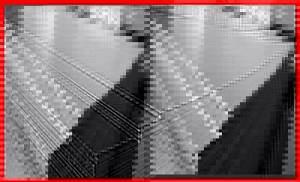
The following materials are used as thermal insulation:
- basalt cardboard;
- basalt wool;
- minerite;
- asbestos cardboard.
In accordance with SNiP 41-01-2003, installation of the casing is carried out in the following sequence:
- Installation of insulation with a ventilation gap of 2 to 3 cm. The thickness of the insulating material is no more than 2 cm and no less than 1 cm.
- Installation of metal sheet.
- Maintain a distance between the stove and the casing of at least 38 cm.
Ceramic bushings are used to attach materials to the wall: they allow the required gap to be maintained and are resistant to fire. If it is not possible to maintain the specified distance between the stove and the casing, then two layers of thermal insulation sheets should be used. For example, two sheets of mineralite are attached using ceramic bushings. The distance between them is 2-3 cm. The outer sheet is covered with stainless steel.
The design of a room or bathhouse does not always allow the installation of metal cladding. Often it will not fit into the interior of the room. In this case, you can resort to sheathing with heat-resistant tiles, which are attached using a special adhesive that is resistant to high temperatures. We list the suitable materials for cladding:
- terracotta tiles;
- porcelain stoneware;
- tiles;
- clinker tiles;
- Soapstone chlorite

When installing, follow the following rules:
- The ventilation gap between the wall and the fireproof sheet should be 2-3 cm.
- Fire-resistant tiles are attached to the installed sheet using special adhesive mixtures.
- The oven should be located no closer than 15 cm from the surface of the tile.
The following are suitable sheet fire-resistant materials for cladding with cladding:
- minerite;
- fireproof plasterboard containing fiberglass;
- glass-magnesium sheet.
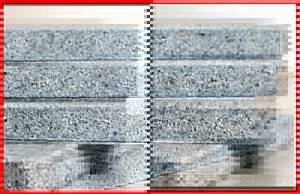
The cladding will help not only to complement the design of the room and maintain a unified style, but also to reduce the permissible distance between the stove and the wall.
Protecting a wooden wall from the heat of a stove
Protecting the walls in the house from the stove is one of the main works that you should pay attention to when finishing the room. Therefore, it is important to familiarize yourself with the requirements of building regulations to ensure the necessary clearances from the stove in the building and responsibly comply with them.
Wooden baths require especially careful compliance with fire safety rules when arranging them. The source of the fire can be anything, an unextinguished cigarette, coals falling from the furnace of the firebox, an uncleaned chimney, but the main source of threat remains the stove itself.
The surface of the stove heats up to 300° - 400°, the heat falls on the wooden walls, which leads to their excessive heating and charring. It is extremely difficult to stop the process of ignition of wooden surfaces; the best way to avoid a fire is to prevent it. There are two truly effective ways to insulate the surface of wooden walls from the heat of sauna stoves - protective equipment in the form of a screen or the construction of special cladding from non-combustible materials.
The wall behind the stove (more precisely, its protection) is a very important issue of fire safety. This issue is especially relevant if the house is wooden. And for good reason! After all, a negligent attitude towards such a place as the “stove wall” can lead to disastrous consequences.
To neutralize the dangerous effects from the main heater in a building on walls located close to it, various methods and construction technologies are used. Starting from the use of protective mastics and impregnations that are used to treat the wooden surface, and ending with the arrangement of so-called “fire-retardant shields”.
In the first case, the wall near the stove retains its original appearance. Those. a wooden house remains that way internally. This option will be useful when you want to preserve the image of wood in the interior. But there is one significant drawback. Over time, wood shrinks, becomes deformed and even cracks.
The second option is more durable and more reliable. He suggests that insulation of the walls from the furnace is carried out by installing a fireproof shield. Let's look at this option in more detail using an example.
The easiest way is to install a sheet of metal to the wall of a wooden house from the stove side. Yes - simple and fast. But this approach will clearly harm the interior of the house! In this case, decorative finishing of the wall behind the stove will be difficult. And, besides, the efficiency of such a design will not be the highest.
There are many options for arranging a shield. And here is one of them. The wall near the stove is lined with non-flammable thermal insulation to reduce the impact of hot air on the wood, and the top is covered with non-flammable sheet material to prevent the surface from igniting when a coal or spark hits it.
In the example under consideration, a glass-magnesium sheet is used. The choice in favor of this material was made based on the price-quality ratio. Firstly, SML is non-flammable. It is able to withstand temperatures up to 1300 degrees. Secondly, when compared with fireproof gypsum fiber board in price, it is much cheaper. Thirdly, the material is quite durable and reliable.
We invite you to familiarize yourself with the standard dimensions of the interior door opening
So, we've sorted out the materials. Next, let's look at an example of how a wall near a stove is insulated from harmful influences.
First of all, the wall behind the stove is prepared for work. We remove sawdust and other debris that is on it. This, of course, is not necessary, but it will not be superfluous.
Next, a metal profile and self-tapping screws are used. With their help, we equip the frame of the future “thermal shield”.
When the frame is ready, we install thermal insulation slabs of stone wool into it...
... and sew it up with LSU sheets.
This is how the wall is insulated from the furnace by installing a “fireproof shield”. This design also meets fire safety requirements and is suitable for further decorative finishing. Most often, ceramic tiles are used for this. As a result, the wall near the stove will be fireproof and beautiful (after applying a decorative coating).
Protective screens for furnaces
The thermal insulation material used for stoves must not only prevent the possibility of fire, but also protect people from too harsh infrared radiation. Protective screens for fireplaces, as well as for sauna stoves, are ideally suited for these purposes. They can be made of metal or using brick or decorative stone.
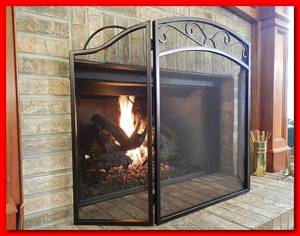
The peculiarity of fireplace screens is that they are made exclusively of metal and can be built-in or mobile. Such designs prevent sparks and hot coals from entering the room, and also, when heated, contribute to the rapid and uniform heating of the air in the room. You can purchase a protective fence or make it yourself. Let's take a closer look at the features of furnace protective screens.
Brick protective screen

Along with insulation, the furnace is insulated using bricks. There are two options: constructing a protective wall and lining the furnace with bricks. In both cases, the brick is laid using an adhesive mixture or clay. The use of cement mortar is considered as a last resort. When lining the stove with brick, it is necessary to provide a gap of 3 to 10 cm, as well as ventilation holes at the bottom and top to ensure better convection and quick heating of the room.
Why insulate the stove?
In the furnace structure the following must be insulated:
- Chimney.
Thermal insulation for a chimney is important for several reasons:
- Insulation can prevent the chimney from cooling quickly, as a result of which the heat in your home will remain warm for a longer time.
- A layer of insulation prevents heating of household structures.
- Condensate accumulates in uninsulated pipelines, which is not just dampness, but a very aggressive substance. The fact is that during the combustion process, moisture and acids are released from the fuel, which mix and settle on the walls of the pipeline, leading to the slow destruction of not only the heating system, but also the structural elements of the building.

Do-it-yourself insulation of chimneys.
- Those walls of the stove that are located in close proximity to the wall of the house. Thermal insulation of the wall from the stove is also a very important process, since the heat of the stove leads to cracking of brick walls with their subsequent destruction. In block or wooden houses, the stove must also be insulated from the walls by laying insulation.
Stainless steel casing
Thermal insulation of the furnace using stainless steel casing has several options. Based on orientation in space, front and side screens . The recommended distance from the oven to the screen is from 1 to 5 cm . Thanks to such structures, it is possible to reduce the intensity of thermal radiation from a metal furnace, since the outer surface of the protective screens warms up to 1000 C. In this case, it is possible to reduce the distance from the furnace to the wall to half a meter. Ease of installation and the presence of special legs that allow you to securely fasten the screens make their use especially attractive.
Thermal insulation for stoves: features of insulation between the wall and the stove, insulation of the chimney
This is the easiest way to make surface protection. It is better to use sheets with a polished front surface. Before fastening, the wall surface at the required level along the height of the screen is covered with a layer of thermal insulation. In this way, we protect the surface of the walls from the effects of heat.
You can lay a layer of thermal insulation or fasten the metal with self-tapping screws with inserted ceramic spacers. But it is better to attach the screen to strips or a metal profile treated with a layer of protection. In this option, the air gap will not allow heat to pass freely to the walls, and reliable insulation of the stove from the wooden wall is ensured.
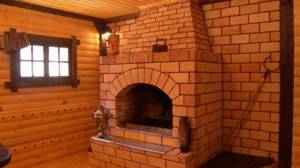
A special gap is made at the bottom of the wall for the passage of cold air, ventilation of the wall and screen. When arranging a wall with a layer of thermal insulation, a number of longitudinal guides are installed on the surface. The space between them is filled with a layer of mineral wool or other material. Then sheets of metal are installed and screwed to the sheathing with self-tapping screws.
In this design, there is no need to leave a gap at the bottom. The air will not be able to pass through calmly, but the wall will be reliably protected from high temperatures. To protect the floor of the house, a slab made of non-flammable durable material can be used.
This protection option is usually installed near the stove. Thus, you can protect not only the wall, but also the person from burns. By installing a brick wall, you can reduce the distance from the stove to the wall. For laying, it is better to use ceramic or fire-resistant bricks.
The work is carried out in several stages:
- you will need to make a small foundation or remove boards from the floor along the marking lines for laying the screen and, by drilling holes in the concrete of the base of the building, insert metal rods to fasten the bottom of the wall and the foundation;
- Having leveled the floor surface, lay out a layer of mortar and lay the first row of bricks; you need to place the bricks in the same plane without distortions. This determines how level your entire wall will be. Do not forget to make small grooves for ventilation; for this you can move several bricks of the bottom row.
- checking the level and pulling the twine for laying each subsequent row, all bricks are laid on a mortar of clay and sand. Having raised the wall to the required height, the top is sealed with a layer of mortar or covered with a board. This way you can make a shelf for decorative ornaments and all sorts of little things.
We invite you to familiarize yourself with Waterproofing dry instructions for use
The brick is laid no higher than the top of the furnace at a distance of at least 40-100 mm from it.
Using both types of protective screens, you can reduce the distance from the oven to 500 mm.
Thermal insulation of a furnace is actually a much more important process than it might seem at first glance. Unfortunately, many owners of private houses neglect stove insulation, considering it an unnecessary measure. In this article we will look at the reasons why stoves are insulated and methods of insulation.
Thermal insulation of the stove allows you to protect the walls of the building from the heat of the stove.
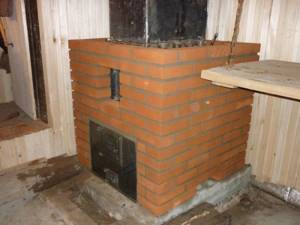
Insulation methods depend on several factors. For example, if we talk about a chimney, then everything depends on the material and design features. Let's consider modern methods of insulating furnace structures.
Many home craftsmen are interested in thermal insulation of the stove from the wall. And even though the insulation of the stove is neglected at first, over time the effects of the stove’s heat on the adjacent wall become clear. And the only way to protect a wall from destruction is thermal insulation.
There are several options for this:
- Perhaps the simplest method, which is distinguished by its low price and ease of execution.
- Lay asbestos boards on the wall.
- Place foil on top of the plates, thus creating a reflector.
Insulation of the wall in the steam room.
Naturally, many will not like this method also for the reason that the foil wall does not have a very aesthetic appearance.
- The next method is more complex, but much more effective. The instructions include the following steps:
- Attach metal hangers to the wall for vertical sheathing.
- Wooden slats should be attached to the hangers, which should be 2-3 cm wider than the insulation boards.
- We lay mineral wool slabs between the slats.
- A reflector is nailed to the slats on top of the mineral wool.
- We mount heat-resistant hot-rolled sheets onto the reflector.
- Any heat-resistant facing material can be mounted on top of plasterboard: mosaic, tile, stone, etc.
This creates reliable thermal insulation for the stove, as a result of which the wall will no longer heat up.
Thermal insulation of a chimney can be made with various materials, namely:
- Mineral wool insulation is one of the most popular materials these days. It has a number of unique positive characteristics, but is afraid of moisture, which is why a waterproofing layer is necessary when laying mineral wool.
- Glassy. Has properties similar to mineral wool.
- Brick. Whole or chipped bricks are very often used as insulation.
- Slag slabs or mortar.
These are the most suitable thermal insulation materials for stoves, which provide a truly high level of insulation.
As mentioned above, the insulation of a chimney depends on the material from which the pipe is made.
- Asbestos cement chimney.
- We clean the surface of the pipe from dirt and dust.
- We place the mineral wool in a steel casing that will be placed on the pipe. Such a casing can be made of roofing or galvanized iron. It consists of several parts, each of which does not exceed 1.5 meters in length, which makes compacting the insulating material easier.
- We put the first part of the casing on the chimney, evenly distributing the insulation.
We place insulation tightly between the pipe and the casing.
- We put on the second part. The gaps between the two parts of the casing should be no more than 100 mm.
- We insulate the resulting structure to the very top.
- The upper part of the pipe is installed with a slight slope.
- If there is any free space left between the chimney and the casing, it should be sealed with cement mortar.
- Steel chimney. Modern steel chimneys are structures made of two pipes with different diameters. In this case, the smaller pipe is the chimney, on which a protective casing is placed. A thermal insulation layer is laid between the pipes.
- The smaller diameter pipe should be inserted into the larger diameter pipe.
- The space created between the two pipes must be filled with mineral or stone wool.
The space between the two pipes should be filled with insulation.
- Brick chimney. Thermal insulation for fireplaces and stoves whose chimneys are made of brick can be done in several ways:
- Plastering method. We attach a reinforced mesh to the pipe.
- Prepare a slag-lime solution. To do this, we use fine slag, lime and a small amount of cement.
- Apply the first layer of plaster to the chimney, 3-4 cm thick.
- Next, you should wait a while until the plaster dries.
- We apply the following layers, the thickness of which should be 5-7 cm. Ideally, it is enough to apply 3-4 layers.
- We whiten the pipe with lime or chalk paint.
This method of insulating a chimney pipe can reduce heat loss by an average of a quarter.
Chimney, insulated and covered with chalk paint.
- Carrying out complex insulation of chimneys. A more complex, but also more effective approach. Cut mineral wool to the size of the chimney.
- Secure the heat insulator to the pipe using metal tape or wire. Studs with washers are also suitable for fixation.
- Line the chimney with asbestos-cement slabs or bricks. The thickness of the facing slabs must be at least 4 centimeters.
- Plaster the surface.
This method of lining chimney pipes allows you to:
- Reduce heat loss by half.
- Increase the density of the chimney.
- Prevent the formation of condensation and, accordingly, the destruction of the chimney.
- Increase the level of safety when using heating systems.
The photo shows the stages of thermal insulation of a brick chimney for stoves and fireplaces.
For finishing walls under a boiler
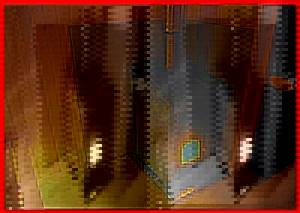
If the walls of the boiler room are wooden, then they need to be pre-treated with fire retardants. The wall behind the boiler must be covered with sheet metal . The remaining area is finished with sheets of plasterboard or glass-magnesium. Then the surface is plastered or covered with ceramic tiles.
Right choice
The choice is based on the scope of application of the insulation. Thus, basalt wool is relevant for insulating roofs, walls, ceilings and facades, as fire protection for ventilation and building structures, pipelines, baths and saunas. Foam glass is an excellent non-flammable insulation for chimneys; it is appropriate to use it for insulating roofs, walls, ceilings and fire-resistant structures.
If you want to insulate an apartment with foam glass, then you need an L-shaped bracket, an anchor, which will help secure a layer of blocks to the plastered wall (ceiling). Fiberglass is applicable for insulating attics, roofs, walls, floors along joists, partitions and interfloor ceilings, saunas and baths, walls behind radiators of central heating systems.
Basalt with cladding
Basalt facing slabs look aesthetically pleasing and provide good fire protection. In addition, this material gives off heat for a long time after heating. You can use this material to cover both a brick screen and the wall itself on top of insulating sheets.
Fire safety cannot be treated negligently - the consequences of carelessness can be tragic. The modern building materials market allows you to choose an option according to your means and taste, while providing reliable protection against fire.
Tips from the pros
In order to increase the fire safety of the ceiling that crosses the chimney or chimney, install a decompression chamber by installing a heat-insulating board in a horizontal position.
It is preferable to provide 2 fan grilles in the box : one for the purpose of cooling the decompression chamber, and through the other, warm air will be transmitted throughout the room. Sheets of plasterboard are attached to the iron guides using self-tapping screws: they will be the basis for the decorative finishing of the fireplace.
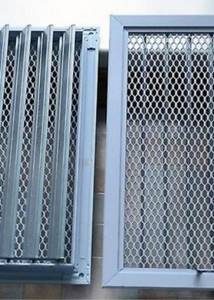
How to insulate a chimney
Having protected the walls from the hot fireplace insert, proceed to insulating the pipe. For this, one of the following materials is used:
Chimney insulation
- mineral wool is the most popular and sought-after material, which is convenient and inexpensive to work with;
- glass wool - its properties are similar to mineral wool, but it is more difficult to work with;
- brick - the use of whole and chipped specimens is allowed;
- slag slabs - designed for insulation in unstable climatic zones.
If the fireplace and chimney are made of brick, then insulation is carried out quickly and with little financial loss. To do this, the surface is plastered using a reinforcing mesh. At the junction of the pipe and the roof, reinforce it - lay an additional layer of brick. This completes the thermal insulation.
It is much more difficult to work with round pipes made of metal and ceramics. These materials overheat strongly during operation of the fireplace, and accidental touching them will inevitably lead to severe burns. Therefore, be sure to take care of insulating such pipes. This is necessary to reduce heat loss and maintain the integrity of the pipe for a long time.
Thermal insulation is carried out with non-flammable materials of dense structure. Mineral wool is ideal and is used to wrap the pipe as the first layer. The second layer of insulation is reinforced on top - stainless steel sheets. They are wrapped around the chimney and sealed. Instead of stainless steel, plaster can be used.
The above method of thermal insulation increases the efficiency of the chimney, increases the service life of the structure and prevents overheating of nearby surfaces. If all the work is done correctly, then re-installation will be required after about 15 years with intensive use of the fireplace.
Heat resistant sealants
This type of sealing materials is produced on a silicate basis, which makes them stable at temperatures close to 1300-1500 °C. Some of them can even withstand temperatures of 1600 °C for a certain time.
In this case, they are dark gray or black in color and are called fire-resistant pipe sealants (the word “fire-resistant” is on the outside of the tube or package).
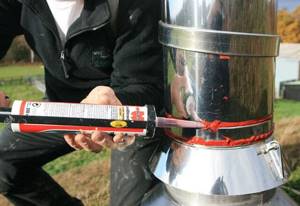
Some important rules when using heat-resistant sealants:
- Work with silicate sealing materials is carried out in the temperature range of +5 - +40 °C.
- The required sealing effect is achieved only in the case of rough and uneven surfaces. For this purpose, if necessary, the areas where the composition is applied are treated with abrasive materials.
- In addition, the surfaces should be degreased with acetone and then allowed to dry for 15-20 minutes.
- When the paste hardens in places where the sealant is applied, very strong and hard seams are obtained, so it is not recommended to use heat-resistant compounds for structures operating in vibration conditions.
- Traces of sealing material can be removed with a wet cloth or rag, but only before the material hardens. After hardening, this will require the use of mechanical force and some simple tools.
